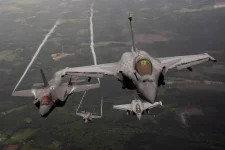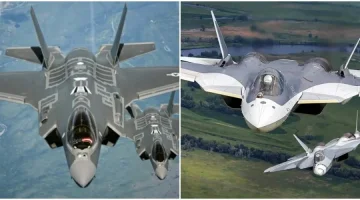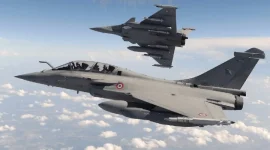- Views: 5K
- Replies: 14
The Indian Air Force (IAF) is seeking to acquire 114 new Multi-Role Fighter Aircraft (MRFA) to address its declining number of fighter squadrons, which currently stands at 31 compared to the officially sanctioned strength of 42.
The Dassault Rafale, a 4.5-generation fighter already operated by the IAF, is considered a strong candidate for this significant purchase.
However, acquiring an additional 110 Rafale jets, potentially the advanced F4 variant, carries substantial financial implications that could heavily impact the IAF's budget for several years.
Estimates for the total cost of 110 Rafale F4 aircraft vary. A lower estimate places the figure around $14.3 billion, calculated using a basic per-jet cost of $130 million that includes initial spares and training.
A more comprehensive estimate, reportedly considered by the Ministry of Defence (MoD), suggests the total package—including weapons, technology transfer, inflation, and India-specific requirements—could reach approximately $27 billion.
For comparison, the 2016 agreement for the first 36 Rafale jets cost India around €7.87 billion (about $8.7 billion then), averaging $242 million per aircraft with a full package of enhancements, weapons, and support.
Understanding the potential impact requires looking at the IAF's capital budget, which funds new equipment purchases. While precise future figures are uncertain, India's overall defence budget for 2023-24 was ₹5.94 trillion (approx. $71.2 billion).
Historically, the IAF's capital share has faced constraints; in 2018, it received significantly less than requested.
Based on recent trends and adjusting for modest inflation, the IAF's annual capital budget might be estimated at around $15 billion for 2025, although a large portion is already earmarked for ongoing projects.
If the Rafale purchase proceeds, payments would likely be spread over the delivery period, estimated to be around seven years. Analysing the potential impact using the estimated $15 billion annual capital budget reveals two scenarios:
- Based on the $14.3 billion estimate: Annual payments would average roughly $2.04 billion, consuming about 13.6% of the IAF's yearly capital budget for seven years.
- Based on the $27 billion estimate: Annual payments would average approximately $3.86 billion. This represents 25.7% of the IAF's estimated annual capital budget, potentially tying up over a quarter of its modernisation funds each year for seven years.
The IAF already has major financial commitments, including payments for 97 domestically produced Tejas Mk1A jets (approx. $7.8 billion) and upgrades for its Sukhoi Su-30 fleet (approx. $2.5 billion).
Furthermore, substantial funding is required for developing India's indigenous fifth-generation fighter, the Advanced Medium Combat Aircraft (AMCA), estimated to need $2 billion annually during development, alongside investments in missile systems and border infrastructure.
Allocating up to 25.7% of the capital budget annually to the Rafale deal could severely restrict funding for these other critical areas, potentially leading to delays in vital indigenous defence programs that are key to India's goal of self-reliance ("Make in India").
The high-end $27 billion figure also notably exceeds the MoD's reported initial budget ceiling of $20 billion for the MRFA project, suggesting difficult decisions may be needed regarding payment schedules, cost negotiations, or the total number of aircraft acquired.
While the Rafale offers proven capabilities, enhanced by India-specific adaptations and advanced weaponry, its substantial cost raises strategic questions about resource allocation.
Observers note the alternative of potentially accelerating indigenous programs like the Tejas Mk1A and AMCA, which could offer lower life-cycle costs and boost domestic industry, aligning with national self-reliance objectives.
The debate involves balancing immediate capability needs with long-term financial sustainability and the strategic importance of developing India's own defence manufacturing base.




